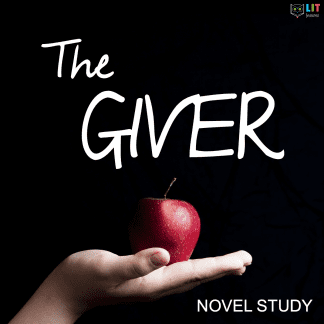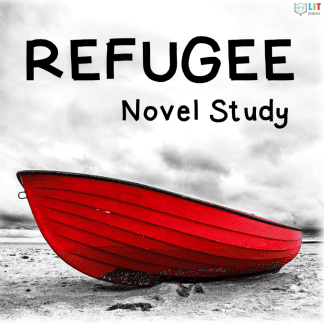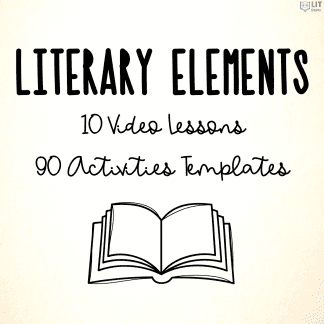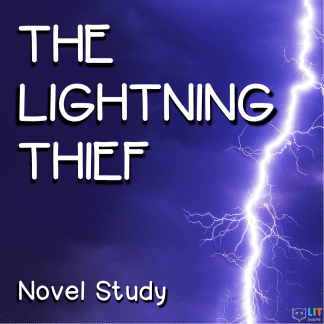National Parks Activities for Students
You can only add to a wishlist if you have an account, please register now.
Create an Account$12
National Park Unit – Snapshot of Resources:
- Engaging Anticipation Activity
- 5 Informational Texts & Questions
- National Park Scrapbook Activity
- Conservation Simulation Activity
- Conservation Advocacy Activity
- Design a National Park Exhibit Activity
- 4 Primary Source Analysis Assignments
- Vocabulary Crossword Puzzle
- Vocabulary Quiz
- Vocabulary Graphic Organizer
- Instructional Pacing Guide
- Digital Links for Google Drive™
- Answer Keys for ALL resources!
-
National Park Scrapbook Activity: The scrapbook project guides students to investigate a national park’s history, culture, and environment. Rather than just writing a paper, though, students will pack their bags for a knowledge adventure! Each page in the scrapbook directs students to learn about specific aspects of the national park. By the end of the project, you can be confident students will have developed a wealth of background knowledge to help them understand what is to come.
-
Design a National Park Exhibit Activity:The national park exhibit project is a great way to provide students with a hands-on learning experience! Students will study a specific aspect or feature of one national park then design and create an exhibit to educate others about this unique characteristic of the park. They will have to conduct research then develop a plan to communicate the information they learned to a “public” audience.
-
Conservation Simulation Activity:The conservation simulation sees students criticallyanalyze the controversy surrounding the damming of the Tuolumne River in the HetchHetchy Valley. Students will analyze primary source documents, adopt a stance on the issue, develop an argument in its favor then participate in a debate to resolve the issue. By the end of the simulation, students will have developed essential critical thinking skills and honed their ability to think about a topic from multiple, conflicting perspectives while drawing upon close readings of multiple nonfiction texts.
-
Conservation Controversy Research & Advocacy Letter Activity:Conservation remains a hot topic today, and conservationists still fight to preserve America’s natural wonders. Meanwhile, others fight for utilizing the land in different ways. This project will guide students to research a present-day conservation controversy, analyze all sides of the conflict, and compose an advocacy letter to an elected official to express their support for or against their chosen issue. With the scaffolds it contains, the conservation research and advocacy project is a great way for students to develop their ability to develop an argument, use strong evidence, engage in advocacy, and apply their knowledge in the real world.
- Zip File (PDF & Word Docs)
- Editable Question Stems
- 143.1 MB
- 108 Pages
- This downloadable resource supplies one single-teacher license for use in your classroom.
- Photocopying of this product is allowed only for the classroom use of the purchaser.
- Replication of this product, in whole or in part, for commercial sale or broader distribution is strictly prohibited.
- This product also may NOT be shared electronically, digitally, or otherwise in a manner that violates the Terms of Use detailed by LIT Lessons.
- For explicit information on permissions, please see the Terms of Use document included with this resource. Thank you for your cooperation and understanding.
National Park Unit – Snapshot of Resources:
- Engaging Anticipation Activity
- 5 Informational Texts & Questions
- National Park Scrapbook Activity
- Conservation Simulation Activity
- Conservation Advocacy Activity
- Design a National Park Exhibit Activity
- 4 Primary Source Analysis Assignments
- Vocabulary Crossword Puzzle
- Vocabulary Quiz
- Vocabulary Graphic Organizer
- Instructional Pacing Guide
- Digital Links for Google Drive™
- Answer Keys for ALL resources!
-
National Park Scrapbook Activity: The scrapbook project guides students to investigate a national park’s history, culture, and environment. Rather than just writing a paper, though, students will pack their bags for a knowledge adventure! Each page in the scrapbook directs students to learn about specific aspects of the national park. By the end of the project, you can be confident students will have developed a wealth of background knowledge to help them understand what is to come.
-
Design a National Park Exhibit Activity:The national park exhibit project is a great way to provide students with a hands-on learning experience! Students will study a specific aspect or feature of one national park then design and create an exhibit to educate others about this unique characteristic of the park. They will have to conduct research then develop a plan to communicate the information they learned to a “public” audience.
-
Conservation Simulation Activity:The conservation simulation sees students criticallyanalyze the controversy surrounding the damming of the Tuolumne River in the HetchHetchy Valley. Students will analyze primary source documents, adopt a stance on the issue, develop an argument in its favor then participate in a debate to resolve the issue. By the end of the simulation, students will have developed essential critical thinking skills and honed their ability to think about a topic from multiple, conflicting perspectives while drawing upon close readings of multiple nonfiction texts.
-
Conservation Controversy Research & Advocacy Letter Activity:Conservation remains a hot topic today, and conservationists still fight to preserve America’s natural wonders. Meanwhile, others fight for utilizing the land in different ways. This project will guide students to research a present-day conservation controversy, analyze all sides of the conflict, and compose an advocacy letter to an elected official to express their support for or against their chosen issue. With the scaffolds it contains, the conservation research and advocacy project is a great way for students to develop their ability to develop an argument, use strong evidence, engage in advocacy, and apply their knowledge in the real world.
- Zip File (PDF & Word Docs)
- Editable Question Stems
- 143.1 MB
- 108 Pages
- This downloadable resource supplies one single-teacher license for use in your classroom.
- Photocopying of this product is allowed only for the classroom use of the purchaser.
- Replication of this product, in whole or in part, for commercial sale or broader distribution is strictly prohibited.
- This product also may NOT be shared electronically, digitally, or otherwise in a manner that violates the Terms of Use detailed by LIT Lessons.
- For explicit information on permissions, please see the Terms of Use document included with this resource. Thank you for your cooperation and understanding.



You Might Also Like
Frequently Asked Questions
Yes! Each novel study contains a wealth of resources that allow you to differentiate for your students.
If you have a specific question about the resource, its contents, or potential uses, please reach out HERE. We are happy to answer all and any questions to make sure the product is a right fit for you and your classroom context.
Each resource has been aligned to the Common Core State Standards for its applicable grades and subject. The specific standards for each resource are listed when you buy a full unit or in the implementation notes for certain products.














